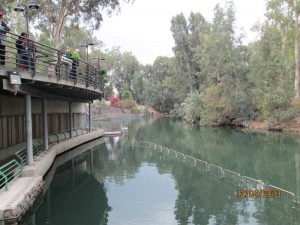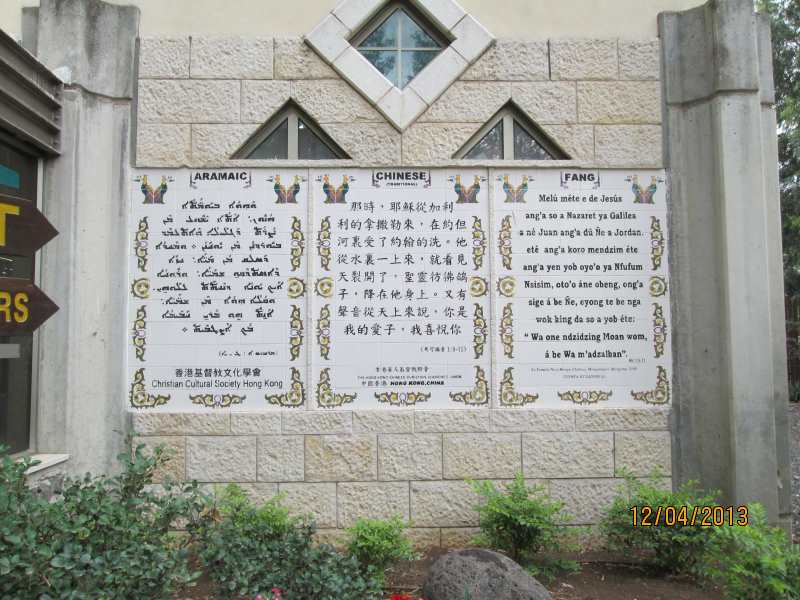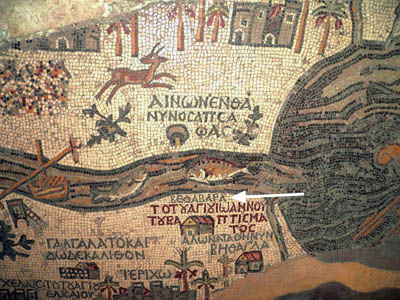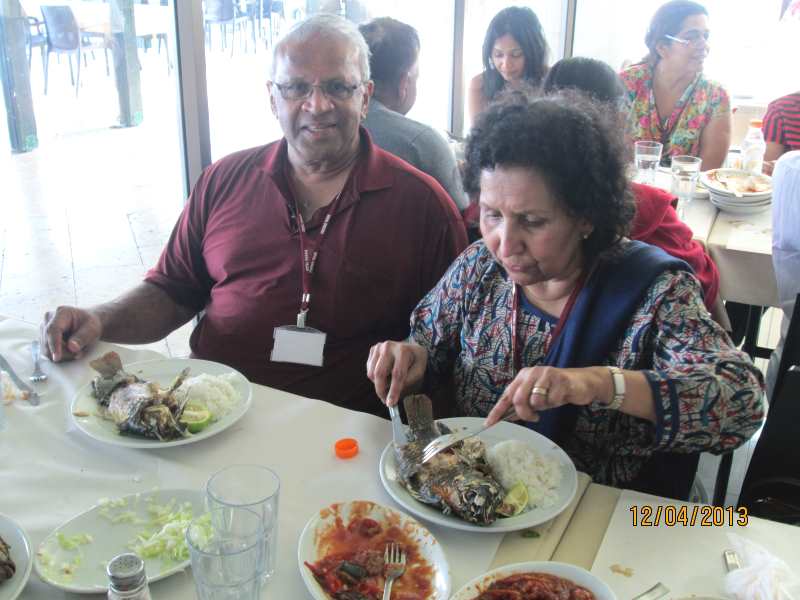One thing to keep in mind when visiting the Holy Land is that some of the sites most important to Christians are based on tradition as to their location in the context of the life of Jesus Christ. Occasionally, there are differing opinions as to the correct location of a particular site. One such example of these differing opinions is where Jesus was baptized.
We visited Yardenit that is viewed by some as the approximate location where Christ was baptized. There is an alternative location closer to the Dead Sea and there is no consensus as to which location is the right one. Frankly, it did not bother me. What we do know is that the gospel according to Mark says:
“And it came to pass in those days, that Jesus came from Nazareth of Galilee, and was baptized of John in Jordan.
And straightway coming up out of the water, he saw the heavens opened, and the Spirit like a dove descending upon him: and there came a voice from heaven, saying, “Thou art my beloved Son, in whom I am well pleased.”

Yardenit is a beautiful, serene location through which the Jordan flows into the the Sea of Galilee and given that many come to visit this site it is well maintained. Yes, there is an element of commercialization which one finds in most of the major biblical sites but it really did not bother me. I just ignored that aspect and focused more on what the site was intended to convey. There are facilities to be baptized again if one so wishes. In the case of our group most went down the steps and dipped one’s hands in the water.

On the walls surrounding the site at Yardenit there are numerous inscriptions as to the significance of the site in many languages from around the world – including some languages that I had never heard of! It is an indication of the number of visitors from all over the world who come to this site.


Incidentally, the other location believed to be the site of the baptism is called Qasr el-Yahud in Bethabara – this site was open to the public only relatively recently after the clearing of landmines left from a prior war between Israel and Jordan. There is considerable evidence that this is the likely site as opposed to Yardenit which we visited.
Bethabara played an important role in the life of Jesus, as he returned there many times after his baptism. He went there, for example, after his rejection in Jerusalem during the Feast of Dedication, “He went away again beyond Jordan into the place where John at first baptized; and there he abode.” (John 10.40). It is also mentioned in the mosaic map at Madaba as is the other site -the white arrow shows this specific location. We did not visit this site.

After Yardenit, we proceeded to lunch at a restaurant by the sea of Galilee and it was there that we were fed “St Peter’s fish”. It is a special fish found in the sea there – and is really a type of tilapia. I understand that the fish served today is farm-raised and not caught in the sea. Over-fishing and other factors have resulted in the fish in the sea being in relatively short supply and a lot smaller than that served at restaurants. There are many biblical references to Jesus, fisherman and fish. We were each served a whole fish after it was cleaned and fried. One would sprinkle some lemon juice on it and and then eat it. Not very flavorful – but an interesting experience.

The origin of the name “St Peter’s fish” is attributed to the reference in the bible where Jesus instructs Peter in Matthew 17:27:
“Notwithstanding, lest we should offend them, go thou to the sea, and cast an hook, and take up the fish that first cometh up; and when thou hast opened his mouth, thou shalt find a piece of money (coin): that take, and give unto them for me and thee.”
It was a reference to the payment of taxes due the temple from Jesus and Peter.
We then were taken for a boat ride on the Sea of Galilee – it was enjoyable with pleasant weather. As we got ready to dock on our return, Achen pointed out bulrushes – pictured below – which, of course, was where Moses was found in basket among the reeds and bulrushes along the Nile. The image below is of bulrushes in the sea of Galilee. They appear in relatively shallow water.

We then proceeded to Tabgha where the Mount of Beatitudes is located. This is where Jesus is believed to have given the Sermon on the Mount. In this location the Church of the Beatitudes was built. There is general agreement among scholars that this may well have been where the Sermon on the Mount took place – and if not precisely on this location, it would be in very close vicinity.
Pilgrims are known to have commemorated the Sermon on the Mount near here since the 4th century. The Spanish pilgrim Egeria (c.381) after visiting a nearby church wrote, “Near there on a mountain is the cave to which the Savior climbed and spoke the Beatitudes.”
Ruins of a small church dated to the late 4th century have been discovered downhill from the present church. It has a rock-cut cistern beneath it and the remains of a little monastery to its south and southeast. Part of the mosaic floor was recovered and is now on display in Capernaum. The present church was built in 1938.
The Catholic church on the Mount of Beatitudes is Byzantine in style. Its octagonal shape represents the eight beatitudes. The eight beatitudes are derived from the Sermon on the Mount. From Matthew 5:3-12:
Blessed are the poor in spirit: for theirs is the kingdom of heaven.
Blessed are the meek: for they shall possess the land.
Blessed are they that mourn: for they shall be comforted.
Blessed are they that hunger and thirst after justice: for they shall have their fill.
Blessed are the merciful: for they shall obtain mercy.
Blessed are the clean of heart: for they shall see God.
Blesses are the peacemakers: for they shall be called children of God.
Blessed are they that suffer persecution for justice’ sake: for theirs is the kingdom of heaven.
Blessed are ye when they shall revile you, and persecute you, and speak all that is evil against you, untruly, for my sake: Be glad and rejoice, for your reward is very great in heaven.
The above shows nine beatitudes and there are two interpretations: one that the ninth beatitude is represented by the dome of the church and the other is that the last one is not, in fact, a beatitude since it refers to “Blessed are ye …”
The chief attraction here, though, is the setting. The cool and quiet gardens overlooking the Sea of Galilee provides a perfect environment for the most famous sermon ever given.
One of the points that Achen made was how would the multitude of people have heard Jesus as he gave the sermon. Apparently, there/were are lava rocks strewn around the area which produced something of an echo chamber which would have enabled the throngs to hear what Jesus said as would the location high above where the people were sitting.
Many in the group touched the waters in the Sea of Galilee – the image below shows Mini doing so.








The description and pictures are very good in particular the bulrushes which certainly evoked an image of Moses in the basket being floated down. Even for one who is not steeped in the tradition and scriptures of the church its the sense of history which I find to be quite powerful.